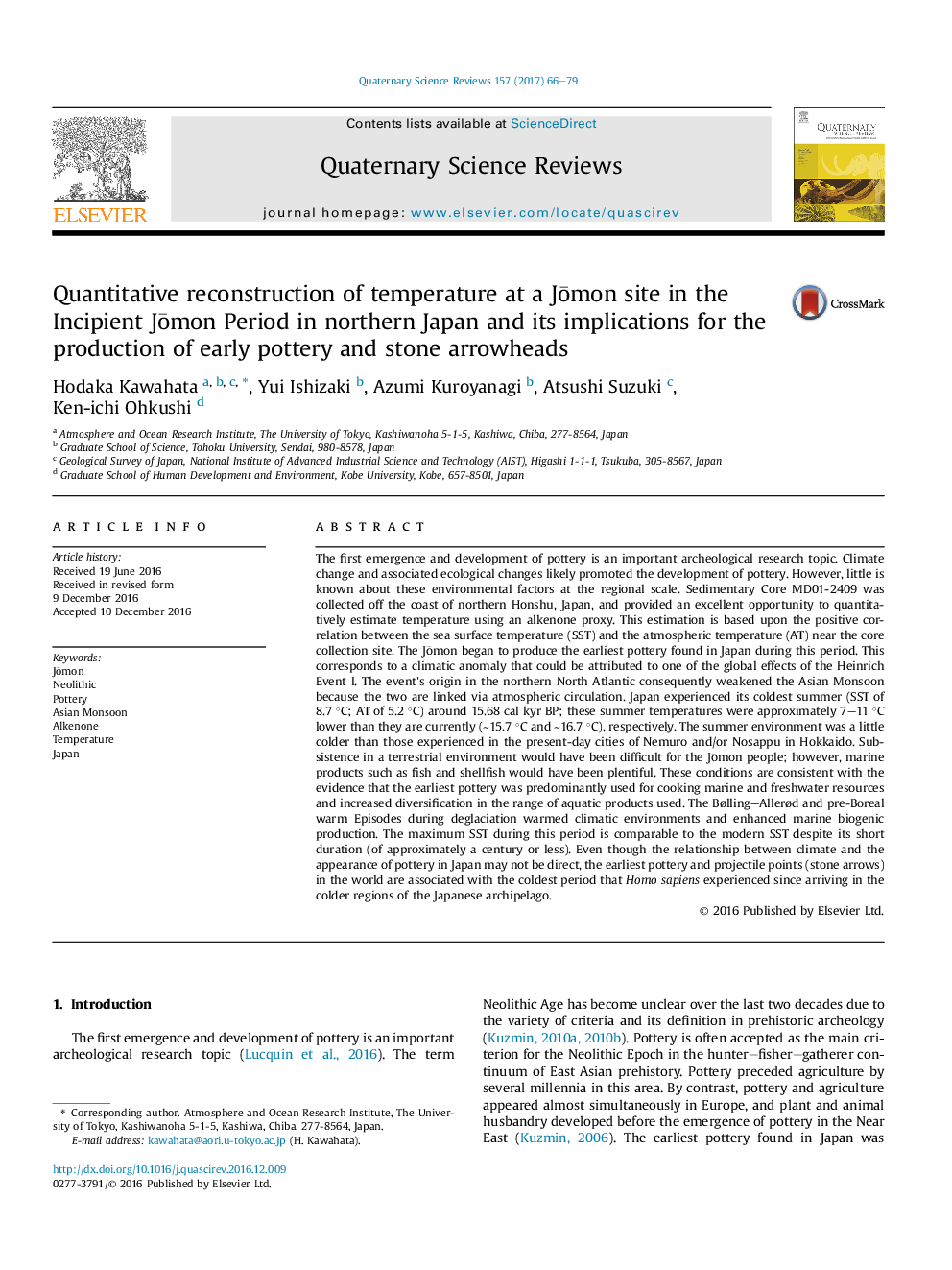| کد مقاله | کد نشریه | سال انتشار | مقاله انگلیسی | نسخه تمام متن |
|---|---|---|---|---|
| 5786856 | 1640778 | 2017 | 14 صفحه PDF | دانلود رایگان |
عنوان انگلیسی مقاله ISI
Quantitative reconstruction of temperature at a JÅmon site in the Incipient JÅmon Period in northern Japan and its implications for the production of early pottery and stone arrowheads
دانلود مقاله + سفارش ترجمه
دانلود مقاله ISI انگلیسی
رایگان برای ایرانیان
کلمات کلیدی
موضوعات مرتبط
مهندسی و علوم پایه
علوم زمین و سیارات
زمین شناسی
پیش نمایش صفحه اول مقاله

چکیده انگلیسی
The first emergence and development of pottery is an important archeological research topic. Climate change and associated ecological changes likely promoted the development of pottery. However, little is known about these environmental factors at the regional scale. Sedimentary Core MD01-2409 was collected off the coast of northern Honshu, Japan, and provided an excellent opportunity to quantitatively estimate temperature using an alkenone proxy. This estimation is based upon the positive correlation between the sea surface temperature (SST) and the atmospheric temperature (AT) near the core collection site. The JÅmon began to produce the earliest pottery found in Japan during this period. This corresponds to a climatic anomaly that could be attributed to one of the global effects of the Heinrich Event I. The event's origin in the northern North Atlantic consequently weakened the Asian Monsoon because the two are linked via atmospheric circulation. Japan experienced its coldest summer (SST of 8.7 °C; AT of 5.2 °C) around 15.68 cal kyr BP; these summer temperatures were approximately 7-11 °C lower than they are currently (â¼15.7 °C and â¼16.7 °C), respectively. The summer environment was a little colder than those experienced in the present-day cities of Nemuro and/or Nosappu in Hokkaido. Subsistence in a terrestrial environment would have been difficult for the JÅmon people; however, marine products such as fish and shellfish would have been plentiful. These conditions are consistent with the evidence that the earliest pottery was predominantly used for cooking marine and freshwater resources and increased diversification in the range of aquatic products used. The Bølling-Allerød and pre-Boreal warm Episodes during deglaciation warmed climatic environments and enhanced marine biogenic production. The maximum SST during this period is comparable to the modern SST despite its short duration (of approximately a century or less). Even though the relationship between climate and the appearance of pottery in Japan may not be direct, the earliest pottery and projectile points (stone arrows) in the world are associated with the coldest period that Homo sapiens experienced since arriving in the colder regions of the Japanese archipelago.
ناشر
Database: Elsevier - ScienceDirect (ساینس دایرکت)
Journal: Quaternary Science Reviews - Volume 157, 1 February 2017, Pages 66-79
Journal: Quaternary Science Reviews - Volume 157, 1 February 2017, Pages 66-79
نویسندگان
Hodaka Kawahata, Yui Ishizaki, Azumi Kuroyanagi, Atsushi Suzuki, Ken-ichi Ohkushi,